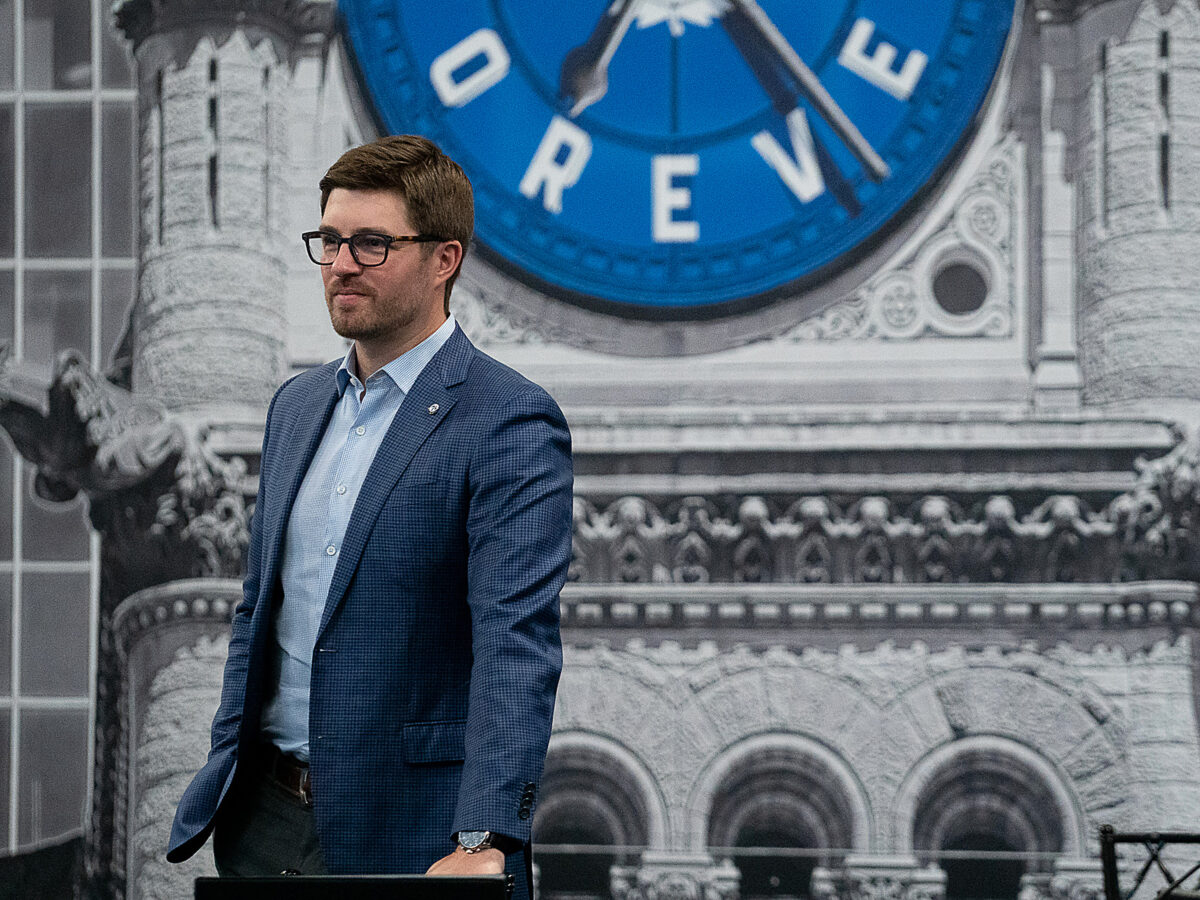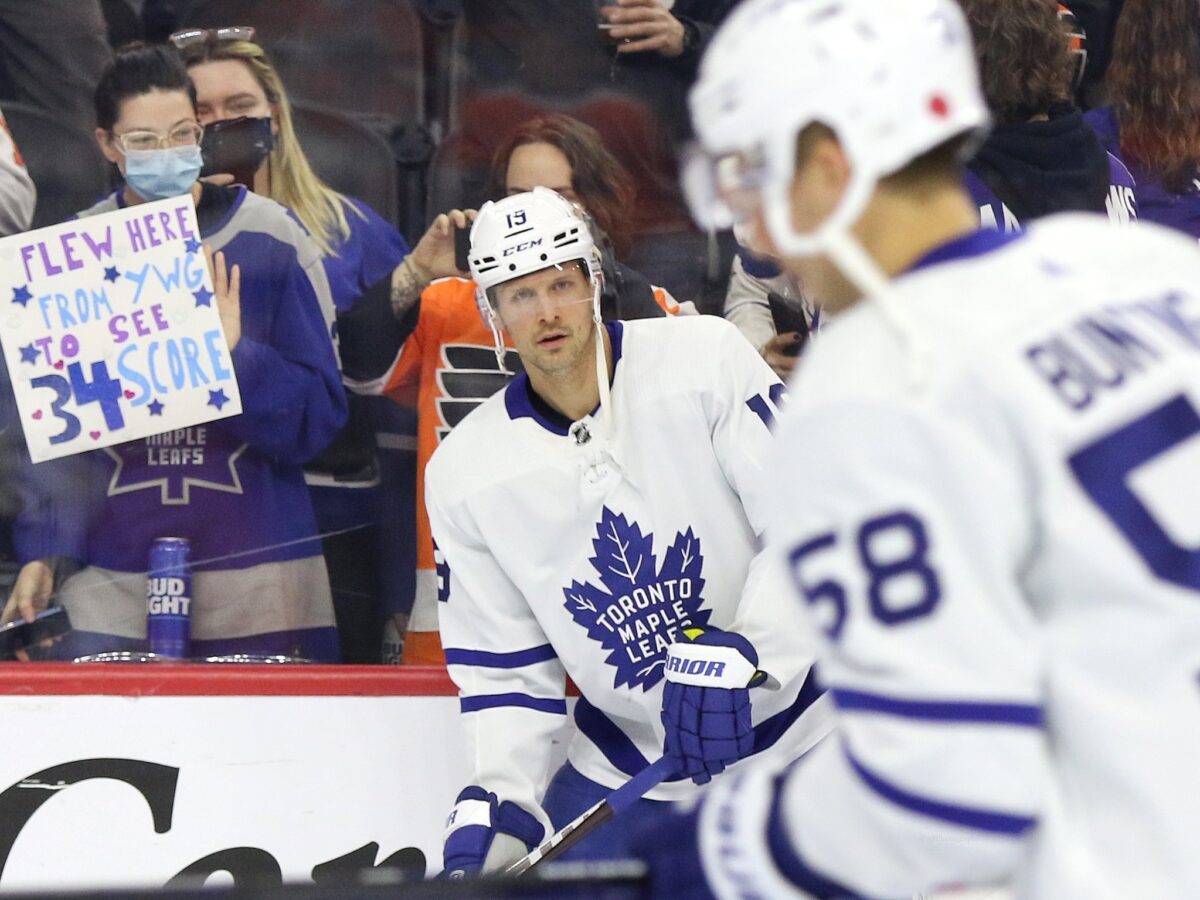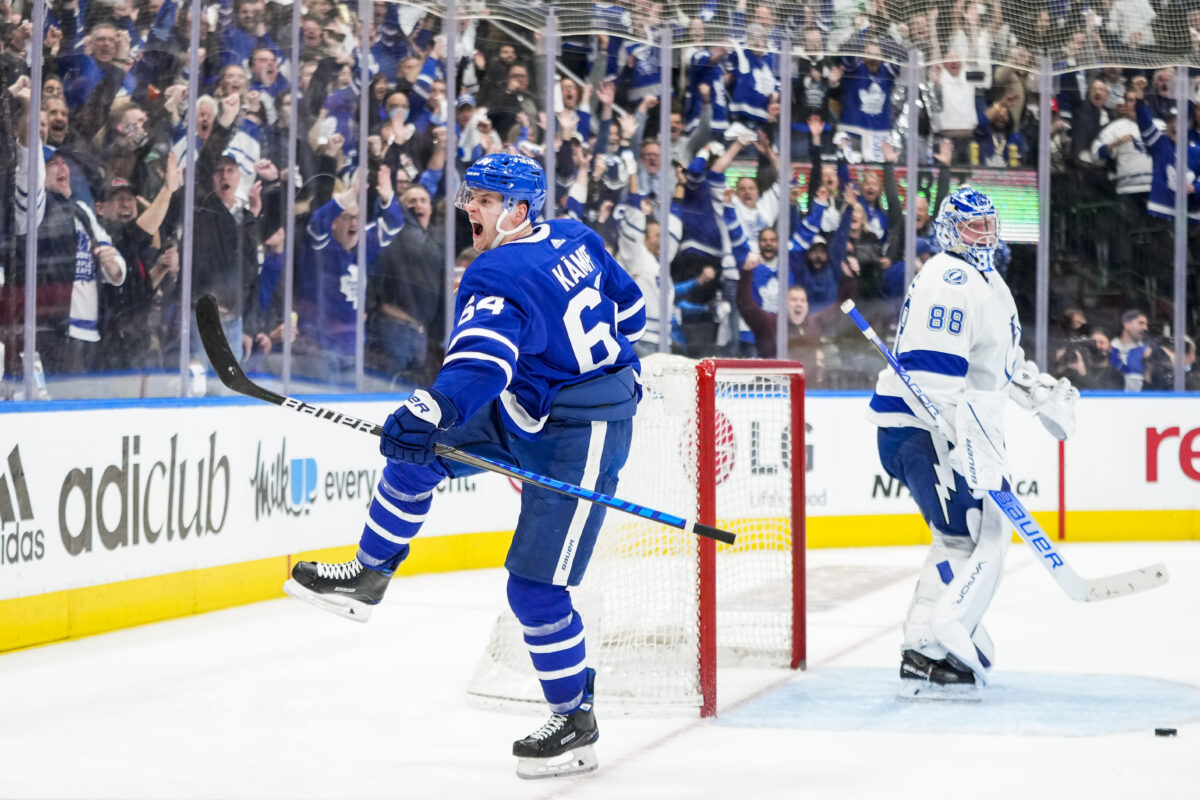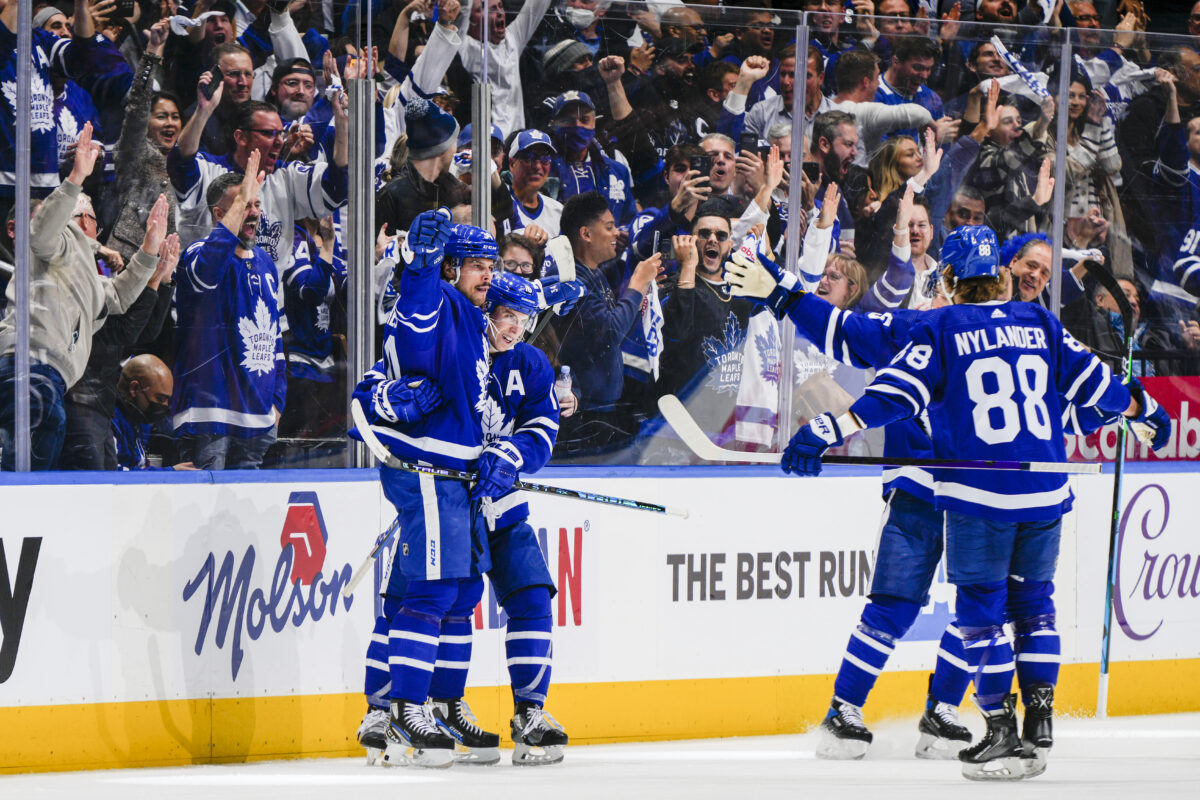Toronto Maple Leafs’ General Manager Kyle Dubas has taken plenty of flack from fans and some media about his supposed tactic of doing the same thing over and over again and expecting different results.
Related: Maple Leafs’ GM Kyle Dubas: Using Anger as a New Negotiating Tactic
The question is, has he been repeating the same mistakes, or has his philosophy adapted over the four years he’s been general manager of the Maple Leafs?
Five Offseasons, Five Strategies
On May 11, 2018, Dubas was named the 17th general manager in Maple Leafs’ history. During that time, he’s overseen five different offseasons of moves to build this team. In our opinion, since his time in charge, he’s been changing his tactics in each of the offseasons he’s had to shape how he’d like to see the team.

Offseason One: During his first offseason during the summer of 2018, the drama surrounded William Nylander’s extended holdout and eventual signing.
Offseason Two: Dubas used this offseason to secure the final pieces of the team’s four most talented players to contracts.
Offseason Three: Dubas started by surrounding the mostly young core with veteran players such as Jason Spezza, Joe Thornton, Wayne Simmonds, and Jake Muzzin.

Offseason Four: Once the three younger players of the Core Four started to mature, Dubas started to add players who were just reaching their prime but for whatever reason had failed to reach their potential with other teams. Those players included Michael Bunting, David Kampf, Ondrej Kase, and Nick Ritchie. In this offseason, he set out to rebuild the third line as a shutdown unit.
Related: Canadiens’ Andrei Markov – Bidding Farewell to The General
Offseason Five: During this offseason (which is currently taking place), Dubas has had to replace some of the key players who left the team in free agency. He’s also begun to rebuild the fourth line by bringing in players such as Nicolas Aube-Kubel, Adam Gaudette, and Denis Malgin. It also looks as if he’s going to create space for some of the players on the Toronto Marlies to move into roster positions. However, that work has not been completed as yet.
There Have Been Successes and Failures, But the Team Has Improved
While he has had some failures along the way, in general the players he has brought in have been successful in improving the team.
Last season Dubas built a solid checking third line of David Kampf, Pierre Engvall, and Ilya Mikheyev. With the loss of Mikheyev in the offseason, he has solidified that spot on the third line with the addition of Calle Jarnkrok.

The fourth line consisted of Jason Spezza, Wayne Simmonds, and a host of different players. It appeared to be a strength midseason, but ultimately fizzled in the playoffs. With the acquisition of Adam Gaudette and Nicolas Aube-Kubel and the reacquisition of Denis Malgin, it appears that Dubas might be applying the same thinking that went into the third line to the fourth line. He’s adding players either in their prime, or approaching their prime, who have underachieved to this point in their careers.
There Remains Work to Do this Offseason
While Dubas still must make moves to clear salary-cap space, it’s been extremely quiet around the Maple Leafs’ offices of late. It makes us question if the offseason moves that he had planned are done?
If that’s the case, does that mean the next stage of Dubas’ strategy is to start the season with a blend of NHL players and AHL call-ups from the Marlies?
Related: A Brief History of Rinkside Advertising
Will Nick Robertson, who had a great run at the end of the AHL season, scoring 28 points in 28 games, get a chance in the top six of the Maple Leafs? Will Joey Anderson get a chance to bring his defensively-sound game into the Maple Leafs’ bottom six?
Are there other players in the system who could get a look with the Maple Leafs?
The Building of the Team Is Underway, What Moves Remain?
Last season, a majority of the Maple Leafs’ core either had career years or at the very least decent seasons. The result was that the team set a franchise record with 115 points in the 2021-22 regular season.

This season, Dubas might feel comfortable enough that the team’s core can carry the team into a playoff spot without having to fight tooth and nail for every point. That would provide him with the opportunity to give players from the Marlies some time with the big team to help their development and assess where they stand, but still feel confident the team will still win the majority of their games.
Could “Offseason” Moves Be Made During the 2022-23 Regular Season?
Dubas talked about having cap flexibility to move players and bring in additional pieces at the beginning of the offseason. We thought at the time that he planned to make those moves during the offseason, and he could still do that. He could also choose to start the 2022-23 season primarily with the roster he has, minus whoever he plans to move to get under the salary cap. He’d then use Marlies’ players to fill whatever holes he has.
Then, as he evaluates his roster during the season, he could make moves on the run as he sees fit. Those moves could include bringing in a top-six winger and a top-four right-side defenseman at or near the trade deadline.
The Calm Before the Storm, or Not?
The inaction we see right now may be the calm before the storm. Maybe Dubas has plans to make some big moves before the start of next season.
Related: Deconstructing Dubas: How The 2020-21 Toronto Maple Leafs Were Built
On the other hand, he could be completely happy to start the 2022-23 season with the roster construction as it sits right now with graduating Marlies filling the holes.
[Note: I want to thank long-time Maple Leafs’ fan Stan Smith for collaborating with me on this post. Stan’s Facebook profile can be found here.]